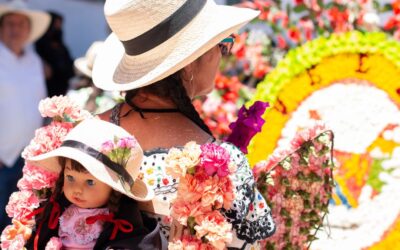Puri’s Rath Yatra is among the world’s grandest spiritual spectacles, but its final act—the Niladri Bije Rasgulla tradition—is a sweet ritual that many outside Odisha still don’t know. On this special day, syrup-soaked Rasgullas become more than just a dessert; they symbolise reconciliation, devotion, and divine love. This is the story of Niladri Bije, the day Lord Jagannath returns home, only to find his beloved Lakshmi Devi not quite ready to forgive him.
At the heart of this divine drama is the Niladri Bije Rasgulla tradition, where this humble sweet transforms from a simple delicacy into a symbol of divine apology and reunion.
🛕 What is Niladri Bije and Why the Rasgulla Tradition Matters?
Niladri Bije (ନୀଳାଦ୍ରି ବିଜେ) marks the final day of the Rath Yatra festival, when Lord Jagannath, after spending 9 days at the Gundicha Temple, returns to his main temple, Srimandir, in Puri. It falls on the Ashadha Trayodashi, which is the 13th day of the bright fortnight of the month of Ashadha (June–July).
But the Lord’s return isn’t welcomed with open doors.
According to the Skanda Purana and temple traditions, when Jagannath embarks on his annual journey with his siblings Balabhadra and Subhadra, he leaves behind Goddess Lakshmi, his consort.
In the humanized portrayal of divine relationships, this act is seen as a breach of marital duty. As any wife would, Lakshmi Devi is understandably upset. She feels ignored and left out.
So when Jagannath returns from his joyful journey, Lakshmi locks the gates of the sanctum sanctorum (Bhandaraghara Dwara) and refuses him entry.
The Rasgulla: A Sweet Offering of Reconciliation
To pacify his consort and regain entry, Lord Jagannath offers her Rasgullas – a beloved sweet in Odia tradition made from chhena (cheese curds) and soaked in sugar syrup.
This act of offering sweets to win over an angry partner has deep emotional and symbolic resonance. It’s not just food! It’s a gesture of humility, love, and reconciliation.
Moved by the Lord’s offering and remorse, Lakshmi finally relents and allows him back into the temple, marking the completion of the Rath Yatra.
The story finds mention in the Skanda Purana (Vaishnava Khanda), which details the rituals and legends surrounding Jagannath worship. While the modern offering of Rasgulla may not be named explicitly in the ancient texts, the narrative of Lakshmi’s anger and the need for appeasement is deeply rooted in the oral and ritual traditions of Puri.
Temple sevayats re-enact this moment each year, following Anka tradition, which has been preserved for centuries.
Odisha’s Legacy and the Niladri Bije Rasgulla Tradition
This ritual has also become central to the “Rasgulla origin debate” between Odisha and West Bengal. In 2019, Odisha received a Geographical Indication (GI) tag for the “Odisha Rasgulla”, affirming its historical link to Jagannath culture and the Niladri Bije ritual.
Every year, the state celebrates “Rasgulla Dibasa” (Rasgulla Day) on Niladri Bije to honour this sacred sweet.The Rasgulla tradition stands as a powerful reminder of Odisha’s contribution to Indian culinary heritage and religious storytelling.
Niladri Bije isn’t just a festival. It’s a spiritual metaphor.
- It teaches that even the divine must seek forgiveness when they wrong their loved ones.
- That gestures of love, however small or sweet, have the power to heal.
- And that relationships, divine or human, thrive on humility, empathy, and shared sweetness.
On this day, the Lord will return, Rasgulla in hand reminding us that sometimes, a sincere apology and a sweet offering can open even the most sacred of doors.
Want to explore more cultural traditions? Check out our celebration of iconic Indian dolls and their stories.
ScottishIndian.com celebrates the divine sweetness of Niladri Bije and the timeless cultural legacy of Lord Jagannath’s love story with Lakshmi.




